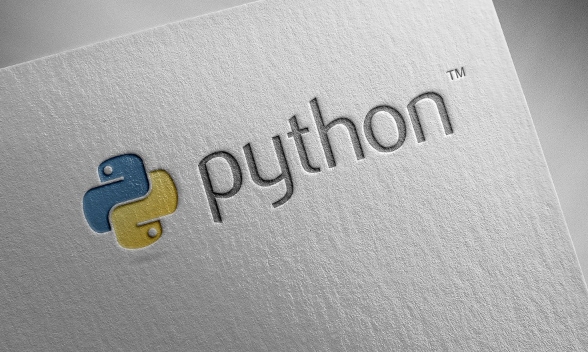Django is suitable for projects that require clear structure and full functionality, while FastAPI is more suitable for scenarios that pursue high performance and modern architectures. 1. Django is mature and stable, with built-in ORM and Admin interfaces, suitable for data-driven projects and medium- and large-scale teams; 2. FastAPI is lightweight and efficient, supports asynchronous and automatic document generation, suitable for high-concurrency tasks and microservice architectures; 3. If you already have a Django ecosystem or need back-end management, choose Django DRF; 4. If you focus on performance, development efficiency and modern syntax, it is recommended to choose FastAPI.

When developing REST APIs, Python's Django and FastAPI are both good choices. They each have their own characteristics and are suitable for different project needs. If you need a project that is fast online and has a clear structure, Django is a safe choice; while FastAPI has more advantages if you pursue high performance, asynchronous support and modern architecture design.

Django: mature and stable, complete functions
Django is a feature-rich web framework with built-in ORM, Admin interface, certification system and other modules, which are very suitable for data-driven back-end services.

- REST Framework (DRF) is the most commonly used REST API plug-in in Django. It provides functions such as serialization, view sets, permission control, etc.
- The development process is relatively fixed and suitable for team collaboration or medium-sized projects.
- ORM is very convenient to use, but supports native SQL or NoSQL are a bit stiff.
- For beginners, the learning curve is slightly steeper because you need to understand both the structure of Django and the mechanism of DRF.
For example, define a simple API interface:
from rest_framework.views import APIView
from rest_framework.response import Response
class HelloWorld(APIView):
def get(self, request):
return Response({"message": "Hello, World!"})FastAPI: Lightweight and efficient, type-first
FastAPI is an emerging framework based on the type annotation feature of Python 3.7, focusing on asynchronous support and automatic document generation.

- Automatically generate Swagger and ReDoc documents, making interface testing very convenient.
- Excellent asynchronous request processing capabilities, suitable for highly concurrency or I/O-intensive tasks.
- There is no built-in ORM, but it can flexibly integrate third-party libraries such as SQLAlchemy and Tortoise ORM.
- Easy to get started, simple code, suitable for small and medium-sized projects or microservice architectures.
A basic FastAPI example:
from fastapi import FastAPI
app = FastAPI()
@app.get("/")
def read_root():
return {"message": "Hello, World!"}How to choose? Depend on your specific needs
If your project has one of the following situations, it may be better for Django DRF:
- There is already a Django project, and the API functionality needs to be extended
- A complete ecosystem such as background management interface, user permission system, etc.
- Team familiar with Django technology stack
And if you prefer these scenarios, FastAPI may be more suitable for you:
- Hope to quickly build high-performance API services
- Need asynchronous support or construction of microservice architectures
- Like modern syntax, pay attention to interface documentation and development efficiency
Small details are easy to ignore
- In Django, remember to configure
rest_frameworktoINSTALLED_APPS, otherwise the API view will not work properly. - FastAPI does not have middleware restrictions by default. It is recommended to add
CORSsettings in the production environment, such as usingfastapi.middleware.cors.CORSMiddleware. - Both frameworks can be deployed to Nginx Gunicorn/Uvicorn, but FastAPI recommends using ASGI servers like Uvicorn to give full play to the advantages of asynchronousness.
Basically that's it. Which one to choose is not static. The key is to decide based on the project stage, performance requirements and team familiarity.
The above is the detailed content of Developing REST APIs with Python Django or FastAPI. For more information, please follow other related articles on the PHP Chinese website!

Hot AI Tools

Undress AI Tool
Undress images for free

Undresser.AI Undress
AI-powered app for creating realistic nude photos

AI Clothes Remover
Online AI tool for removing clothes from photos.

Clothoff.io
AI clothes remover

Video Face Swap
Swap faces in any video effortlessly with our completely free AI face swap tool!

Hot Article

Hot Tools

Notepad++7.3.1
Easy-to-use and free code editor

SublimeText3 Chinese version
Chinese version, very easy to use

Zend Studio 13.0.1
Powerful PHP integrated development environment

Dreamweaver CS6
Visual web development tools

SublimeText3 Mac version
God-level code editing software (SublimeText3)
 How to handle API authentication in Python
Jul 13, 2025 am 02:22 AM
How to handle API authentication in Python
Jul 13, 2025 am 02:22 AM
The key to dealing with API authentication is to understand and use the authentication method correctly. 1. APIKey is the simplest authentication method, usually placed in the request header or URL parameters; 2. BasicAuth uses username and password for Base64 encoding transmission, which is suitable for internal systems; 3. OAuth2 needs to obtain the token first through client_id and client_secret, and then bring the BearerToken in the request header; 4. In order to deal with the token expiration, the token management class can be encapsulated and automatically refreshed the token; in short, selecting the appropriate method according to the document and safely storing the key information is the key.
 Explain Python assertions.
Jul 07, 2025 am 12:14 AM
Explain Python assertions.
Jul 07, 2025 am 12:14 AM
Assert is an assertion tool used in Python for debugging, and throws an AssertionError when the condition is not met. Its syntax is assert condition plus optional error information, which is suitable for internal logic verification such as parameter checking, status confirmation, etc., but cannot be used for security or user input checking, and should be used in conjunction with clear prompt information. It is only available for auxiliary debugging in the development stage rather than substituting exception handling.
 How to iterate over two lists at once Python
Jul 09, 2025 am 01:13 AM
How to iterate over two lists at once Python
Jul 09, 2025 am 01:13 AM
A common method to traverse two lists simultaneously in Python is to use the zip() function, which will pair multiple lists in order and be the shortest; if the list length is inconsistent, you can use itertools.zip_longest() to be the longest and fill in the missing values; combined with enumerate(), you can get the index at the same time. 1.zip() is concise and practical, suitable for paired data iteration; 2.zip_longest() can fill in the default value when dealing with inconsistent lengths; 3.enumerate(zip()) can obtain indexes during traversal, meeting the needs of a variety of complex scenarios.
 What are Python type hints?
Jul 07, 2025 am 02:55 AM
What are Python type hints?
Jul 07, 2025 am 02:55 AM
TypehintsinPythonsolvetheproblemofambiguityandpotentialbugsindynamicallytypedcodebyallowingdeveloperstospecifyexpectedtypes.Theyenhancereadability,enableearlybugdetection,andimprovetoolingsupport.Typehintsareaddedusingacolon(:)forvariablesandparamete
 What are python iterators?
Jul 08, 2025 am 02:56 AM
What are python iterators?
Jul 08, 2025 am 02:56 AM
InPython,iteratorsareobjectsthatallowloopingthroughcollectionsbyimplementing__iter__()and__next__().1)Iteratorsworkviatheiteratorprotocol,using__iter__()toreturntheiteratorand__next__()toretrievethenextitemuntilStopIterationisraised.2)Aniterable(like
 Python FastAPI tutorial
Jul 12, 2025 am 02:42 AM
Python FastAPI tutorial
Jul 12, 2025 am 02:42 AM
To create modern and efficient APIs using Python, FastAPI is recommended; it is based on standard Python type prompts and can automatically generate documents, with excellent performance. After installing FastAPI and ASGI server uvicorn, you can write interface code. By defining routes, writing processing functions, and returning data, APIs can be quickly built. FastAPI supports a variety of HTTP methods and provides automatically generated SwaggerUI and ReDoc documentation systems. URL parameters can be captured through path definition, while query parameters can be implemented by setting default values ??for function parameters. The rational use of Pydantic models can help improve development efficiency and accuracy.
 How to test an API with Python
Jul 12, 2025 am 02:47 AM
How to test an API with Python
Jul 12, 2025 am 02:47 AM
To test the API, you need to use Python's Requests library. The steps are to install the library, send requests, verify responses, set timeouts and retry. First, install the library through pipinstallrequests; then use requests.get() or requests.post() and other methods to send GET or POST requests; then check response.status_code and response.json() to ensure that the return result is in compliance with expectations; finally, add timeout parameters to set the timeout time, and combine the retrying library to achieve automatic retry to enhance stability.
 Python variable scope in functions
Jul 12, 2025 am 02:49 AM
Python variable scope in functions
Jul 12, 2025 am 02:49 AM
In Python, variables defined inside a function are local variables and are only valid within the function; externally defined are global variables that can be read anywhere. 1. Local variables are destroyed as the function is executed; 2. The function can access global variables but cannot be modified directly, so the global keyword is required; 3. If you want to modify outer function variables in nested functions, you need to use the nonlocal keyword; 4. Variables with the same name do not affect each other in different scopes; 5. Global must be declared when modifying global variables, otherwise UnboundLocalError error will be raised. Understanding these rules helps avoid bugs and write more reliable functions.






